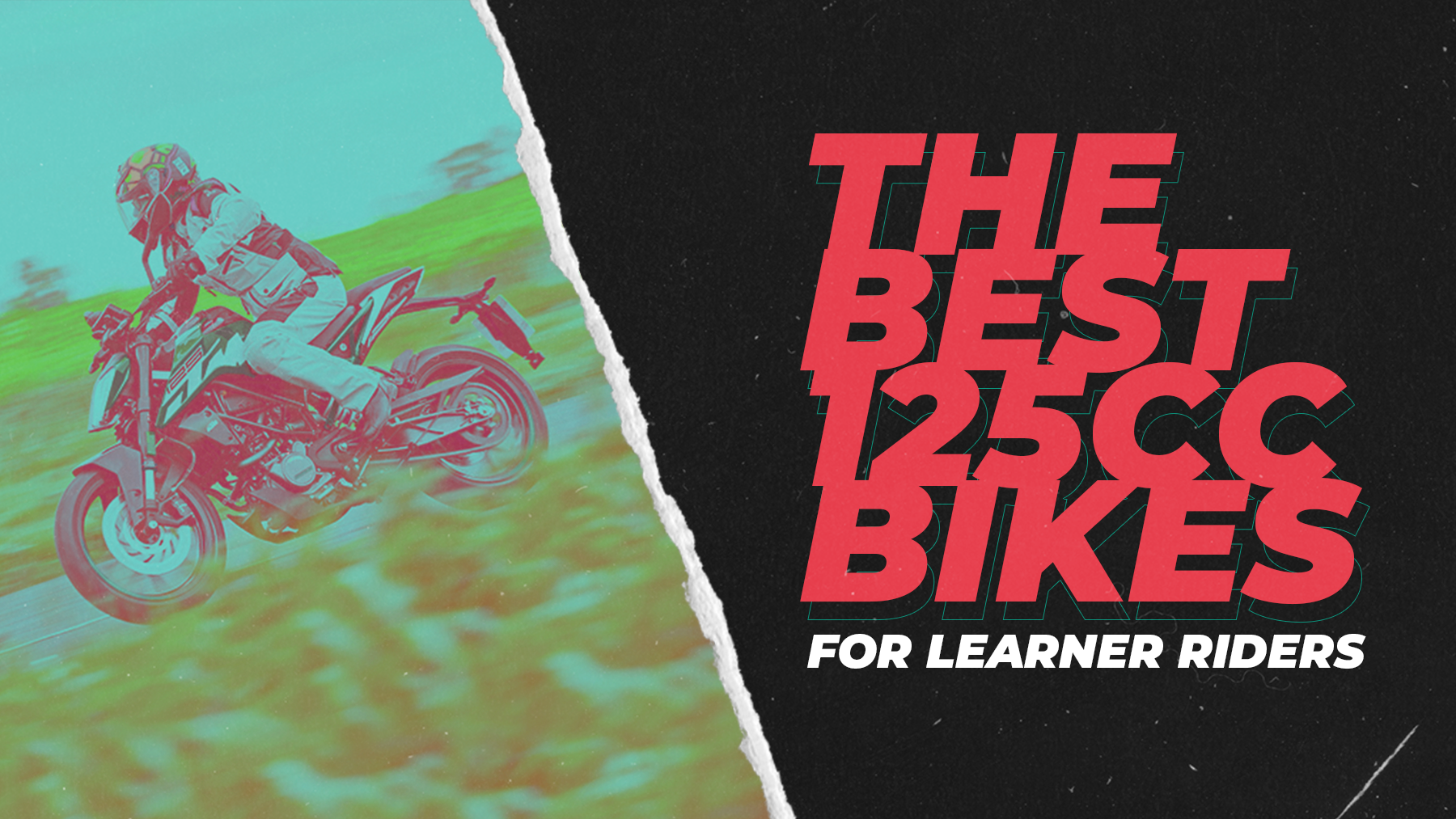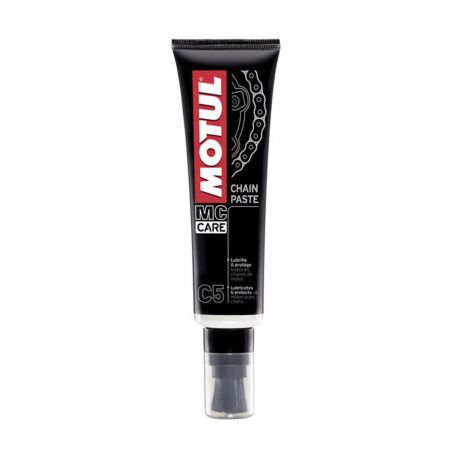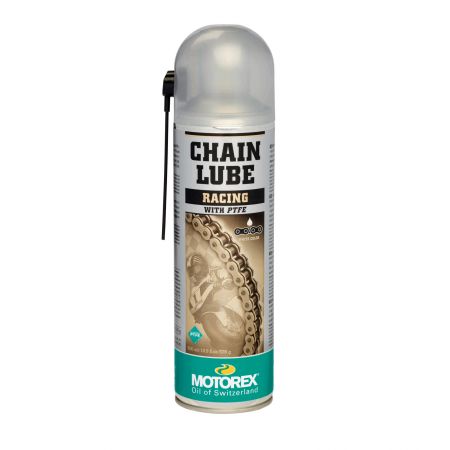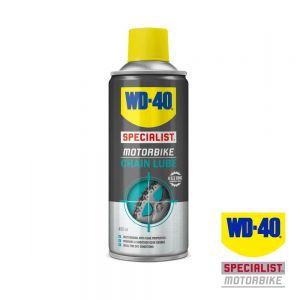The Best Motorcycle Chain Lube 2021

The chain is one of the most abused parts on a motorcle, not only because of the forces acting on it, but sometimes because it is neglected by the rider. If you don’t take care of your chain, you risk damaging not only it but also your sprockets, and possibly your swingarm. In a worst case scenario the chain could come off the rear sprocket and lock the wheel, or it could break, and the consequences of either do not bear thinking about.
Neglecting your chain can also cause issues for your bike's power delivery, and cause it to feel and sound rough. It will cause premature wear in both the chain and the sprockets, costing you in the long term. Caring for your chain properly is not difficult or expensive, and doing so will massively increase its life and that of the sprockets. Cleaning, lubrication, and adjustment is all it takes.
Here’s our brief guide to knowing which type chain you have, and an introduction to some of the chain care products from the likes of Motorex, Motul and WD40, and how to use them.
The Different Chain Types
To maintain your chain, first you need to know which type you have. There are two main types, namely standard (unsealed) and sealed, and each requires a slightly different approach.
Standard chain (unsealed)
Standard chains with no seals are usually found on low-capacity and vintage motorbikes.
They’re the same type that you get on bicycles and conveyor belts - a series of links joined together by pins and plates and with no sealed-in method of internal lubrication. Unsealed chains don’t hold lubricant very well and so have to be treated more regularly than sealed ones to prevent then wearing quickly.
After every 200 miles, and more often in the wet, clean the chain using a dedicated chain cleaner such as Motul C1 Chain Cleaner or WD40 Specialist Chain Cleaner and then spray it with a water repellent like WD-40 Original Lubricant to draw any residual moisture out and prevent rust. Then apply a chain lube for increased protection. Something thick and durable like Motul C5 Chain Paste works well.
Retro enthusiasts with unsealed chains have been known to oven bake their chains in various types of oil, but we wouldn’t recommend this if you live with anyone else!
Sealed chain (O-ring, X-ring Z-ring)
Sealed ring chains have shaped rings fitted between the sideplates and the links that seal in the internal grease that is applied when the chain is made, and they also keep dirt and water out. These chains are fitted to most modern mid to high capacity bikes. O-ring chains came first, and X- and Z-ring chains are developments of that - they last a bit longer and slightly reduce the amount of friction in the rolling chain, but do cost a bit more. The difference is in the shape of the seal.
The seals and the sealed-in grease improve the longevity of these chains compared to standard ones, but the external parts still require cleaning and lubrication every 300 miles.
Clean the chain using a dedicated chain cleaner such as Motul C1 Chain Cleaner or WD40 Specialist Chain Cleaner, and then use a specialist chain lube like WD-40 Motorcycle Chain Lube or Motorex Motorcycle Racing Chain Lube.
If you’re not sure which type of chain you have, look for black rubber seals between the sideplates and the links. If your chain has these seals, it’s an O-ring, X-ring, or Z-ring.
The Top 3 Chain Lubes
Every biker has their preference of lube, and so do we. We asked our team to pick their favourite lubricants to keep your chain in the game. Here are the top 3:
1. Motul C5 Chain Paste

For over 150 years Motul has produced premium oil and lubricants.
C5 Chain Paste has been formulated specifically for road bikes. It’s robust for high performance and comes with a handy little applicator brush.
Grant, our New Products Manager, likes it because “it’s more of a faff to apply than regular lube but there is zero fling and it lasts longer than others I’ve tried.”
2. WD-40 Motorcycle Chain Lube

WD-40 Specialist Motorcycle Chain Lube, like all their products,is an easy to apply synthetic formula.
It provides long-lasting lubrication for all chain types and is designed with anti-fling properties. The spray applicator means it is easy to apply and it dries fast.
Dean, our Video Producer, likes it because “most other lubes I’ve tried are too thick for my Choho X-ring chain. I spray this after every journey and it’s dry by the next ride.”
3. Motorex Racing Chain Lube

Swiss company Motorex are leading producers of synthetic race products.
Motorex Racing Chain Lube is used by the KTM and Husqvarna factory teams on the track, so you know when Motorex say they designed it especially for racing, it’s true.
Tom, our Graphic Designer, likes it because “it’s adhesive and weather-resistant, developed to remain stable at extremely high temperatures - perfect for Sunday rides.”
How to Lubricate Your Chain
Cleaning and lubricating your chain should take about 15 minutes.
You should do this around every 200 miles for a standard chain and 300 miles for a sealed chain, and more often if you have ridden in the wet. We have put together some chain care kits that consolidate all the stuff you need into one package.
1. Check
Check the condition of your chain and your front and rear sprockets. If you can pull the chain away from the rear sprocket by its rearmost link, it’s probably too worn and needs replacing. Equally, if the teeth of the sprockets are worn away at one side, you might need to replace them soon - if you are unsure get them checked by a mechanic. Your manual will tell you how much free play your chain should have. If it is outside the tolerance given, you need to adjust it.
2. Clean
If your chain and your sprockets are in good shape, clean the chain using a dedicated chain cleaner such as Motul C1 Chain Cleaner or WD40 Specialist Chain Cleaner, following the instructions on the can. If you don't have a cleaner then kerosene (paraffin) will also work. Use a chain cleaning brush to agitate any encrusted dirt loose (don’t use a wire brush), then give it another spray with the cleaner. Finally give it a wipe with a clean rag to remove the excess, then allow it to dry completely before applying the lube.
3. Apply
Apply the chain lube as evenly as you can on all sides of the chain. With unsealed chains you need to apply the lube quite liberally all over to be sure it works its way into the inner parts of the rollers. With sealed chains you can be a little more sparing as those inner parts are already lubricated for life. But don’t be afraid to slather it on every so often, just keep it clear of the tyre and brake. Chain lubricant is much cheaper than a new chain, so don’t be too mean. Wipe off the excess lube from the outer parts of the chain to prevent dirt sticking to it.
4. Wait
It is best to wait a while before riding – this gives the lube a chance to penetrate into the chain, and then for the solvent to evaporate and the lube to thicken and adhere so there is less chance of it flinging off as soon as the chain turns. If you do plan to ride off immediately, apply the lube sparingly initially and then give a more generous coating when you park up for the night.
Keep it up!
You now know how to get lubing and moving…
Keep up with the maintenance and you’ll be in for a smoother, safer ride.
If you have any questions about chain cleaner and lube, let us know.
Shoot us a message at [email protected].

